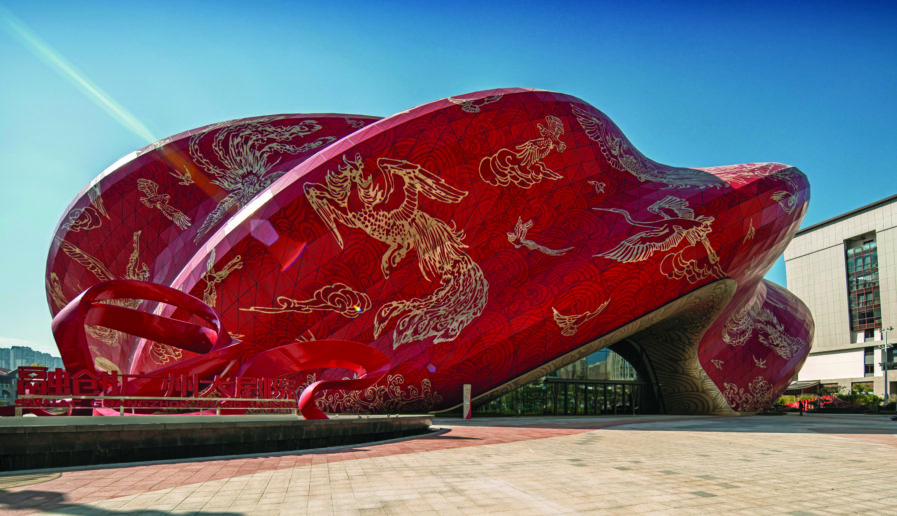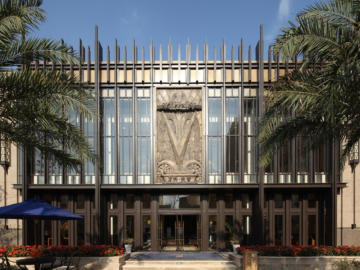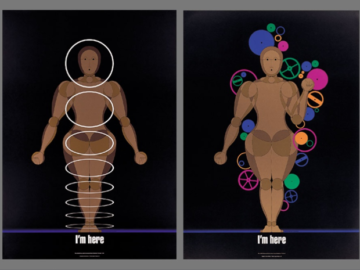For thousands of years, the Chinese city of Guangzhou (once known in English as Canton) has been an internationally recognized center for the arts and culture. As the most prominent port along the ancient maritime Silk Road, the influx of sailors and merchants from elsewhere over the course of thousands of years led to a particularly rich cultural landscape, and the aesthetics of the silk itself and its decoration came to hold a special place in the heart of the city.
London-based SCA | Steven Chilton Architects kept all of this in mind when designing the Sunac Guangzhou Grand Theatre, which opened last year in Guangzhou’s Huadu District. To say the building is striking is a gross understatement: it sits on the landscape like a giant red swirl of soft-serve ice cream draped in flowing red silk, decorated with gold-line drawings by local artist Zhang Hongfei. The way silk flows and folds was a primary source of inspiration for the building’s overall form, which incorporates a series of ten folds radiating from a central volume, twisting as they rise from the ground to the building’s roofline. Equally influential was the traditional Chinese practice of using silk painting on clothing and tapestries to illustrate legends, myths, and scenes of nature. The images in gold on the building’s undulating facade were inspired by a beloved local myth of the “100 Birds Paying Homage to the Phoenix”—a story where the phoenix is a symbol of virtue and grace, playing leader and mentor for the other birds. The golden drawings overlay a base layer of darker lines, whose patterns were inspired by motifs found in traditional Chinese tattoo art.






